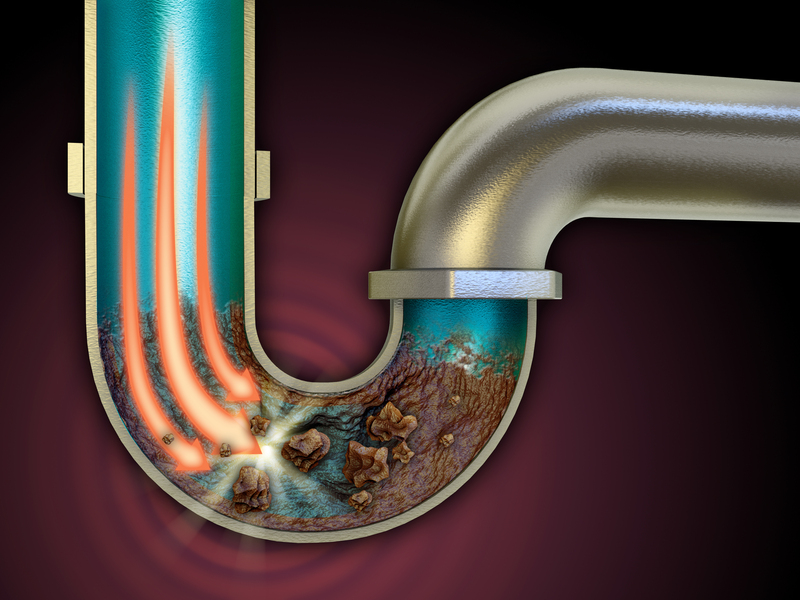Achieve a Pristine Stovetop: Removing Burned-on Residue
Posted on 28/09/2025
Achieve a Pristine Stovetop: Removing Burned-on Residue
Are you struggling with stubborn, burned-on residue on your stovetop? Maintaining a sparkling, clean cooking surface can seem like a never-ending battle, especially after preparing hearty meals. Burned food remnants not only detract from your kitchen's appearance but can also hinder your stove's performance and even pose safety hazards.
In this comprehensive guide, we'll unveil expert tips and techniques to remove burned-on residue from your stovetop, ensure your appliance shines, and keep your kitchen a healthy and inviting space. Read on to discover effective methods, tools, and cleaning hacks that work wonders for glass, ceramic, and traditional coil stoves alike!
Understanding Burned-on Stovetop Residue
Before tackling the cleanup, let's explore what causes burnt-on messes on stoves and why regular maintenance is essential.
- Overboiling and Spills: Sauces, soups, and liquids can boil over, leaving sticky sugars and starches that quickly cook onto hot surfaces.
- High Heat: Food particles exposed to direct heat can char and cement themselves to the stovetop, making them tough to remove.
- Neglect: Delayed cleaning allows residues to dry, harden, and accumulate, increasing the risk of permanent stains or even surface damage.
Regularly cleaning your stove not only restores its appearance but prevents long-term damage and ensures efficient, safe cooking.

Tools & Supplies for Banishing Burned-on Residue
To effectively remove stubborn, burned-on gunk from your stovetop, gather these essential supplies:
- Microfiber cloths or soft cleaning rags
- Baking soda and distilled white vinegar
- Razor blade or scraper (for glass/ceramic tops)
- Plastic or silicone spatulas (to avoid scratching)
- Mild dish soap
- Spray bottle (for homemade cleaning solutions)
- Non-abrasive sponge or scrubber
- Gloves (for safety and hygiene)
Pro Tip: Always consult your stove manufacturer's cleaning guidelines before using sharp tools or strong chemicals, as certain surfaces are more delicate than others.
Step-by-Step: How to Remove Burned-on Residue from Your Stovetop
1. Ensure Safety First
- Turn off the stove and let all burners and surfaces cool completely.
- Unplug electric stoves or shut off gas supply if possible during extensive cleaning.
2. Initial Wipe-Down
- Use a damp microfiber cloth to remove loose crumbs and lighter stains before you tackle tough, burned-on spots.
- If you encounter greasy areas, use a drop of mild dish soap to help lift the residue.
3. Apply a Homemade Paste
- Mix a thick paste of baking soda and a small amount of water.
- Spread the paste generously over the burned-on residue and let it sit for 15-20 minutes to break down the grime.
- You can also spray a little white vinegar over the baking soda for extra fizzing power, especially for challenging stains.
4. Gentle Scrubbing
- Using a non-abrasive sponge or soft scrubber, work in circles to lift the softened residue.
- For glass tops, a razor blade held at a shallow angle can gently scrape off burned-on food (ensure the surface is wet to prevent scratches).
- Plastic spatulas or specialty stove scrapers are ideal for delicate surfaces.
5. Rinse & Repeat
- Wipe the area with a clean, damp cloth to remove the loosened residue and paste.
- Repeat the baking soda paste process if any stubborn bits remain, or give particularly tough spots a second application.
6. Deep Clean for Gas Burners and Grates
- Remove grates and burner caps and soak them in a sink filled with hot, soapy water.
- Scrub with a non-abrasive brush or pad, focusing on burned-on residue.
- For metal parts with heavy buildup, try a paste of baking soda and vinegar and let it sit before scrubbing.
7. Final Buff and Shine
- Dry the stovetop thoroughly with a soft, clean towel.
- Buff glass and ceramic surfaces with a gentle, circular motion for a smudge-free, sparkling finish.
Removing Burned Food from Different Types of Stovetops
Each stove material has unique characteristics and requires a slightly different approach. Here's how to achieve a pristine stovetop no matter what type you own:
Glass or Ceramic Stovetops
- Use baking soda paste and a vinegar spray: This combination lifts stains without scratching the surface.
- Scraper or razor blade: Carefully use a tool designed for ceramic/glass stove tops. Hold at a shallow angle with a wet surface.
- Avoid abrasive cleaners: Stay away from steel wool or scouring pads, which can permanently scratch or dull the finish.
Traditional Electric Coil Stoves
- Remove coils and drip pans before cleaning.
- Wash drip pans with hot, soapy water.
- Address baked-on residue with a baking soda paste; soak if needed for heavy buildup.
- Clean coils with a damp cloth; never immerse coils in water.
Gas Stovetops
- Take out grates and burner caps for soaking.
- Scrub grate and cap surfaces with a stiff, non-abrasive brush and degreaser if needed.
- Wipe the base with a cloth soaked in vinegar solution for a streak-free finish.
Induction Cooktops
- Cool surfaces completely before cleaning.
- Utilize a microfiber cloth, baking soda, and vinegar for residue.
- Use cookware of correct size to prevent spills and reduce future residue.
Quick Fixes for Persistent Burned-on Stovetop Residue
- Commercial stove-top cleaners: Look for specially formulated creams or sprays for glass, ceramic, or metal tops.
- Lemon juice: An acidic option for tackling minor scorch marks and imparting a fresh scent.
- Magic erasers: Mildly abrasive, effective for corners and stubborn spots--test on a hidden area first.
- Hydrogen peroxide: Mixed with baking soda, it lifts baked-on stains from most surfaces (check manufacturer guidelines first).
- Dishwasher tablets: Dissolve in hot water for soaking removable stove parts. Rub a wet tablet on glass for tough marks.
Always test any new cleaning solution or tool on a small, inconspicuous area first to avoid accidental damage.
Prevention: Keep Burned-on Messes at Bay
Prevention is better than cure! Make a habit of these practices to help achieve a clean, residue-free stovetop every day:
- Wipe up spills and splatters as soon as the surface cools.
- Use oversized pots or splatter guards to minimize overflow.
- Regularly deep clean (once per week if you cook frequently).
- Keep burners and heating elements free from excess oil by avoiding pouring oil directly over burners.
- Inspect and clean removable parts (grates, drip pans) routinely.
- Consider stove liners (as recommended by the manufacturer) for easy cleanup.
Common Mistakes to Avoid When Cleaning a Burned-on Stovetop
- Using abrasive pads or powders: These can scratch enamel, glass, or ceramic surfaces.
- Forgetting to cool the stove: Cleaning on a hot surface can lead to burns or set stains.
- Soaking electrical components: Never immerse electric coils or controls in water; always clean with a damp cloth instead.
- Using harsh chemicals not intended for your stove type can discolor or corrode the surface.
- Skipping regular cleaning: This allows residue to build up, making future burned-on messes even harder to remove.
When to Call a Professional
Some stubborn stains or damage may require expert intervention. If your stovetop's burned-on residue resists all efforts--or if electrical components or glass tops show cracks, warping, or discoloration--it may be time to consult a qualified appliance repair service.

FAQs: Achieving a Pristine Stovetop
-
How often should I clean my stovetop?
To keep residue at bay, wipe down your stove after every use, and deep clean at least weekly or more often after heavy cooking. -
Is it safe to use a razor blade on my glass stovetop?
Yes, but with caution. Use only approved razor scraper tools, hold at a low angle, and ensure the area is wet to avoid scratching. -
What if the residue smells burnt even after cleaning?
Double-check for hidden gunk under elements or controls. Persistent odors may indicate incomplete cleaning, so repeat the process or examine for hidden burned bits. -
Can natural cleaners remove burned-on stovetop residue effectively?
Absolutely! Baking soda, vinegar, lemon juice, and hydrogen peroxide are all highly effective--plus, they're eco-friendly and safe.
Conclusion: Enjoy a Gleaming, Burn-Free Stovetop
Achieving a pristine stovetop free of burned-on residue is possible with the right tools, techniques, and a little elbow grease. By addressing spills quickly, using safe cleaning products, and adopting regular maintenance, you can ensure your kitchen always looks inviting and functions optimally.
From gentle baking soda solutions to specialty cleaning tools, you now have all the knowledge you need to remove burned-on stovetop residue and maintain a spotless, hygienic cooking space. Say goodbye to stubborn stains, enjoy hassle-free meals, and impress your family and guests with a sparkling kitchen centerpiece!
Your journey to a stovetop that shines like new starts today!




